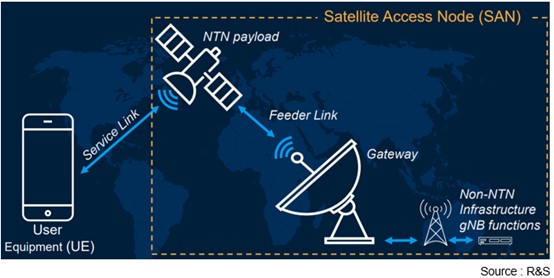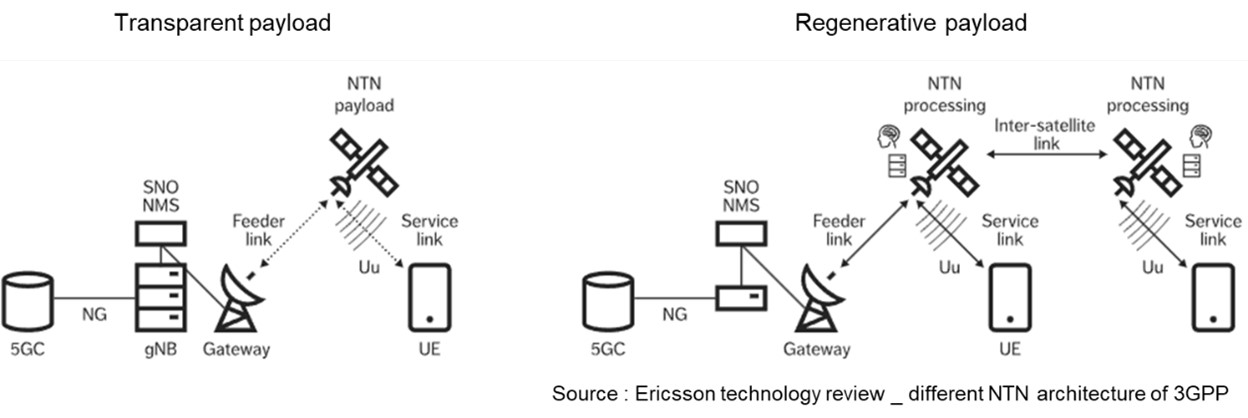SGS Taiwan is the first laboratory in Taiwan with IoT-NTN verification qualification capability
SGS Taiwan Wireless Laboratory is proud to announce that it has become Taiwan's first laboratory with IoT-NTN verification qualification. The achievement of this milestone not only marks SGS Taiwan's leading position in Taiwan's technology field, but also demonstrates our commitment to future technology development.

SGS Taiwan is the first laboratory in Taiwan with IoT-NTN verification qualification capability
IoT-NTN is a wirelss communication technology which uses non-terrestrial network(NTN) for IoT devices, it uses space carrier(space-borne) or high-altitude carriers(air-borne) to realize the communication transmission of IoT devices through communication equipment installed on the carrier. This concept was introduced in 3GPP release 17 and is design for IoT and 5G NR. SGS Taiwan has cooperated with equipment vendors for the trial-run promotion of IoT-NTN in the Sep’ 2023, in response to the RF/RRM/protocol conformance testing of IoT-NTN enfored by GCF, SGS Taiwan took the lead in providing IoT-NTN conformance certification and testing services this year.

"SGS has always been committed to providing the world's highest quality testing and inspection services. We are very honored to be the first laboratory in Taiwan to qualify as a IoT-NTN verification laboratory. This is not only an affirmation of SGS's professional capabilities in the wirelss field, but also demonstrates our commitment to assisting customers in achieving innovation and breakthroughs" said, Dikin Yang, Manager of SGS Wireless Laboratory .
System architecture of 3GPP NTN:
The wireless link between satellite gateway and user equipment is not the direct communication, instead, the wireless interconnection between satellite gateway and user equipment is relized by means of the satellite with installed communication equipment .
Feeder link : communication link between satellite gateway and NTN payload
Service link : communication link between NTN payload and user equipment

Defined frequency band of 3GPP NTN:
The frequency bands defined by 3GPP release 17 based on IoT-NTN and NR NTN technology are shown as below, and new frequency bands will be added in the subsequent release 18.
IoT-NTN band for rel. 17 : 255 and 256
NR NTN band for rel. 17 : n255 and n256

Key technology、challenges and application scenarios of 3GPP NTN:
The NTN payload of 3GPP can be devided into two types as transparent payload and regenerative payload. The structure of transparent payload is currently defined by 3GPP release 17 and the following release 18, the statellite mainly plays the role of a relay station(repeater). And the structure of regenerative payload is expected to be defined by future 3GPP release 19, its satellite integrates part of basestation fuction and has the capability of inter-satellite link among satellites.
IoT-NTN generally uses high-orbit geosynchronous(GSO/GEO) satlellite for communication, the main advantage is that three high-orbit geosynchronous satlellites deployment can achieve the global coverage, the disadvantages are the high signal transmission path-loss and high latency due to its high-orbit satellite is far away(~3.5k km) from the user devices. IoT-NTN technology is suitable for IoT devices with low transmission data-rate and high latency applications, the example of application scenarios is shown as below.
NR NTN generally uses low-orbit non- geosynchronous (LEO) satlellite for communication, the advantage of LEO satellite communication is the low signal transmission path-loss and low latency due to its satellite is close(~ 300~1500 km) to user divice, the disadvantage is that hundreds or thousand of satellites deployment are required to achive the global coverage. At the same time, the technical challenges for doppler frequency shift and time variant delay need to be overcame due to its high-speed moving of LEO satellite. NR NTN technology is suitable for devices with higher transmission data-rate and lower latency applications, the example of application scenarios is shown as below.
IoT-NTN use cases:
- SOS and two-way messaging
- Asset tracking, transportation and logistic
- Environment monitoring
NR NTN use cases:
- Fixed or mobile VSAT
- Remote area coverage
- Public safety

In order to ensure the quality and performance of IoT-NTN products, SGS Taiwan Wireless Laboratory took the lead in cooperating with test and measurement equipment manufacturers to provide pre-test services, and obtained samples from chip manufacturers in advance for comparison and verification. We will continue to be committed to providing excellent technical support and testing services to our customers, including performance evaluation, interoperability testing, security testing, etc. This series of tests not only ensured compliance with various IoT-NTN technical standards, but also verified that SGS's testing laboratory has highly sophisticated testing equipment and a professional technical team that can meet customers' high requirements for quality and reliability.
SGS believes that this will provide a reliable platform for Taiwan's communication equipment manufacturers, network operators and other IoT-NTN related industries to ensure that its IoT-NTN equipment and solutions meet the highest global standards and assist Taiwanese enterprises to have breakthroughs and successes in the 5G era. This marks a new step for SGS Taiwan in promoting Taiwan's technology industry, and also demonstrates SGS's leading position in the global 5G field.
If you want to know more about IoT-NTN or certification requirements, please contact us:
📧 twwireless.MKT@sgs.com ☎ (02) 2299-3279 # 1530 / 1522
